
Ocean Systems Engineering-An International Journal
Scope & Guideline
Advancing Knowledge in Ocean Systems and Environmental Science
Introduction
Aims and Scopes
- Hydrodynamic Analysis and Modeling:
The journal emphasizes the development and application of hydrodynamic models to understand fluid interactions with marine structures, including floating platforms, offshore wind turbines, and wave energy converters. - Structural Integrity and Fatigue Analysis:
There is a strong focus on the assessment of structural integrity in offshore installations, particularly concerning fatigue analysis and stress concentration in various joint configurations. - Renewable Energy Technologies:
Research on the optimization and performance assessment of renewable energy systems, particularly wind and wave energy technologies, is a significant focus area, reflecting the journal's commitment to sustainable energy solutions. - Numerical Simulations and Experimental Studies:
The journal publishes both numerical simulations and experimental investigations, providing a comprehensive understanding of ocean systems through a combination of theoretical and practical research. - Environmental Impact Assessments:
Research on the environmental implications of marine engineering projects, including sediment transport and ecological impacts, is an essential part of the journal's scope.
Trending and Emerging
- Floating Offshore Wind Energy Systems:
There is a notable increase in research focused on floating wind energy platforms, highlighting their potential for harnessing renewable energy in deeper waters where traditional fixed structures are impractical. - Wave Energy Conversion Technologies:
Emerging studies on wave energy converters demonstrate a growing interest in optimizing designs for efficiency and integration into existing power grids, showcasing advancements in renewable energy technologies. - Artificial Intelligence in Marine Engineering:
The application of machine learning and AI-based approaches for predictive modeling and optimization in marine environments is on the rise, indicating a shift towards data-driven decision-making in ocean engineering. - Environmental Sustainability and Resilience:
Research addressing the environmental impacts of marine engineering projects, including assessments of sediment transport and ecological interactions, is increasingly prevalent, emphasizing the industry's focus on sustainable practices. - Advanced Numerical Methods and Simulations:
The adoption of sophisticated numerical modeling techniques, such as computational fluid dynamics (CFD) and smoothed particle hydrodynamics (SPH), is trending, reflecting the need for high-fidelity simulations in complex marine environments.
Declining or Waning
- Traditional Marine Structures:
Research focused on conventional marine structures, such as fixed platforms and older vessel designs, appears to be decreasing, possibly due to the industry's shift towards more innovative and adaptable solutions like floating structures. - Basic Hydrodynamics without Advanced Applications:
Studies that only address fundamental hydrodynamic principles without application to modern engineering challenges are becoming less common, as researchers prioritize applied studies that contribute directly to technology development. - Historical Case Studies:
The frequency of historical case studies analyzing past marine engineering projects has diminished, as contemporary research increasingly emphasizes forward-looking, innovative designs and technologies. - Static Analysis Techniques:
Static analysis of marine structures is becoming less emphasized as dynamic analysis and real-time modeling techniques gain traction, reflecting the industry's need for more responsive and adaptable engineering solutions.
Similar Journals

PROCEEDINGS OF THE INSTITUTION OF MECHANICAL ENGINEERS PART A-JOURNAL OF POWER AND ENERGY
Advancing Innovation in Power and Energy EngineeringPROCEEDINGS OF THE INSTITUTION OF MECHANICAL ENGINEERS PART A-JOURNAL OF POWER AND ENERGY, published by SAGE PUBLICATIONS LTD, is a pivotal journal dedicated to advancing the fields of mechanical engineering and energy technology. With a history spanning from 1983 to 2024, this journal provides a respected platform for researchers and practitioners to disseminate findings that address contemporary challenges in power generation, energy efficiency, and sustainable engineering practices. As evidenced by its quarter ranking in Q3 within the categories of Energy Engineering and Power Technology, and Mechanical Engineering, it serves as a significant resource for academics aiming to enhance their understanding and explore innovation in these critical areas. While currently not an open-access journal, the research published here is invaluable for both ongoing education and professional practice, making it an essential read for anyone engaged in the engineering disciplines.

Journal of Zhejiang University-SCIENCE A
Pioneering Insights in Engineering Science.The Journal of Zhejiang University-SCIENCE A, published by Zhejiang University Press, is a prestigious academic journal dedicated to advancing the field of Engineering since its first issue in 2003. With an ISSN of 1673-565X and E-ISSN of 1862-1775, this journal has established itself as a significant platform for researchers, professionals, and students interested in the multifaceted aspects of engineering science. Located in the heart of Hangzhou, China, the journal has successfully attained a Q2 rating in the 2023 quartiles for Engineering (miscellaneous), showcasing its impact and quality within the discipline, complemented by a commendable Scopus rank of #57 out of 307, placing it in the 81st percentile. Although it does not currently offer Open Access, the journal is committed to disseminating high-quality research findings that foster innovation and collaboration within the engineering community. The journal's scope encompasses a wide range of engineering topics, reflecting the rigorous and evolving nature of the discipline, making it an invaluable resource for advancing academic knowledge and practical applications in engineering.
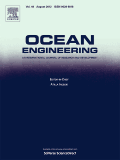
Ocean Engineering
Charting New Waters in Environmental EngineeringOcean Engineering, published by PERGAMON-ELSEVIER SCIENCE LTD, is a prestigious peer-reviewed journal that has been at the forefront of marine sciences since its inception in 1968. With an impressive impact factor and recognition in the Q1 quartile of both Environmental Engineering and Ocean Engineering, it stands as a key resource for researchers, professionals, and students alike. This journal focuses on a wide range of topics relevant to the field, including coastal engineering, marine resource management, and ocean dynamics, aiming to bridge theoretical research and practical applications. As ranked 14th in Ocean Engineering according to Scopus, it reflects the influential contributions of its articles and provides a platform for innovative discoveries that advance the field. Although not open-access, it offers diverse subscription options for accessing cutting-edge research. The journal’s ongoing legacy of publishing high-quality research continues to contribute significantly to the advancement of knowledge in ocean-related engineering disciplines.
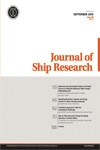
JOURNAL OF SHIP RESEARCH
Bridging theory and practice in naval architecture.JOURNAL OF SHIP RESEARCH is a premier publication in the field of marine engineering and naval architecture, published by the Society of Naval Architects and Marine Engineers. With a focus on advancing the science and practice of ship design and construction, this journal has become a vital resource for researchers, professionals, and students alike. The journal spans a historical range since its inception in 1969 and provides critical insights and advancements in various related disciplines, highlighted by its strong quartile rankings in Applied Mathematics and Ocean Engineering as of 2023. Although not an open-access publication, it offers valuable research papers that are influential in shaping engineering practices and methodologies across the globe. With an ISSN of 0022-4502 and an E-ISSN of 1542-0604, the journal is available to a broad audience, providing essential knowledge that bridges theory and practical applications in the evolving maritime domain.
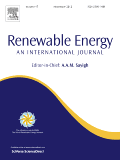
Renewable Energy
Exploring Breakthroughs in Clean Energy.Renewable Energy is a prestigious international journal published by PERGAMON-ELSEVIER SCIENCE LTD, dedicated to advancing the field of renewable energy technologies and their applications. Since its inception in 1991, this journal has provided a critical platform for researchers, professionals, and students to explore innovative solutions in renewable energy, sustainability, and environmental protection. With an impressive impact factor and ranked in the top quartile (Q1) of its category, Renewable Energy is recognized for its high-quality, peer-reviewed research that significantly contributes to the scientific and professional discourse in the sector. The journal is indexed in Scopus, holding an esteemed rank of #21 out of 270 in its field, underscoring its influence and reach. Researchers can access the journal’s articles through traditional subscriptions, ensuring a broad dissemination of vital knowledge that supports the global transition to sustainable energy sources. Addressed from its headquarters in Oxford, England, Renewable Energy is crucial for anyone involved in the journey towards a sustainable future, fostering collaboration and innovation in a critical area of environmental science.
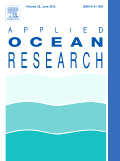
APPLIED OCEAN RESEARCH
Transforming Challenges into Opportunities in Ocean ScienceApplied Ocean Research, published by Elsevier Scientific Ltd, stands as a premier journal in the field of ocean engineering, with an impressive impact factor derived from its esteemed reputation and contributions to the discipline. Having been established in 1979, the journal has continually provided a platform for groundbreaking research, fostering innovation and advancement in applied ocean science through a diverse array of topics, including marine technology, coastal engineering, and ocean energy. Currently holding a prestigious Q1 ranking in the Scopus category of Ocean Engineering, with a rank of 10 out of 105 and a notable 90th percentile, Applied Ocean Research is a vital resource for researchers, professionals, and students dedicated to understanding and solving complex challenges linked to ocean environments. Although it provides subscription-based access, the depth and quality of research featured make it a key reference point for those in academia and industry alike. Located in the heart of London, this journal embodies a commitment to excellence in the study of ocean phenomena, positioning itself as a critical conduit for knowledge dissemination and professional growth in this dynamic field.
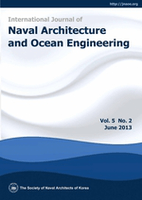
International Journal of Naval Architecture and Ocean Engineering
Navigating the forefront of oceanic research and technology.International Journal of Naval Architecture and Ocean Engineering is a premier academic journal dedicated to advancing the fields of naval architecture and ocean engineering. Published by the SOC NAVAL ARCHITECTS KOREA, this Open Access journal has been a vital resource for researchers and industry professionals since its founding in 2009, providing unrestricted access to high-quality, peer-reviewed articles. With a notable Q2 ranking in both Control and Systems Engineering and Ocean Engineering, it ranks among the top journals in its category, offering valuable insights into emerging technologies and methodologies. The journal’s reputation is further highlighted by its Scopus rankings, positioning it within the top 30% of journals in Ocean Engineering and the top 31% in Control and Systems Engineering as of 2023. Based in the vibrant academic hub of Seoul, South Korea, the journal invites manuscripts that explore innovative solutions and critical research to address the challenges in naval and oceanic environments, contributing to the global dialogue on sustainable maritime practices.

International Journal of Renewable Energy Research
Transforming energy landscapes with cutting-edge insights.International Journal of Renewable Energy Research (IJRER) is a distinguished peer-reviewed journal dedicated to advancing the field of renewable energy through innovative research and comprehensive analyses. Published by the esteemed INT JOURNAL RENEWABLE ENERGY RESEARCH, this journal has established itself as a vital resource for academics and industry professionals alike since its inception in 2011. With a focus on a wide array of topics in Energy Engineering and Power Technology and Renewable Energy, Sustainability and the Environment, IJRER has been recognized for its contributions, attaining a Q3 categorization in Energy Engineering and Power Technology and a Q4 rank in Renewable Energy for 2023. The journal is indexed in Scopus, demonstrating its global reach and impact, with notable rankings in both relevant categories. Researchers can access a wealth of valuable insights and findings that are crucial for fostering sustainable practices and technologies. Thus, IJRER plays a pivotal role in driving the future of renewable energy research and innovation.
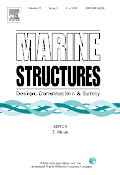
MARINE STRUCTURES
Exploring the Depths of Marine InnovationMARINE STRUCTURES, published by Elsevier Science Ltd, is a premier scholarly journal that has established itself as an essential platform for the dissemination of cutting-edge research in the fields of Marine Engineering, Ocean Engineering, and Materials Science. With an impressive H-index reflecting its substantial citation impact, and boasting a Q1 ranking across several categories including Materials Science and Mechanical Engineering as of 2023, this journal is recognized globally for its contributions to advancing knowledge and innovation in marine structures. The journal covers a wide range of topics, from the design and analysis of marine structures to the latest technologies and methodologies in ocean engineering, making it invaluable for researchers, professionals, and students alike. As the journal continues to publish high-quality articles that explore contemporary challenges and opportunities within the marine domain, it serves as a catalyst for collaboration and knowledge exchange among academia and industry. Researchers are encouraged to submit their original works and benefit from the rigorous peer-review process that ensures the quality and reliability of published content. MARINE STRUCTURES is not currently an open access journal, providing a subscription-based model that facilitates access to its authoritative body of knowledge.
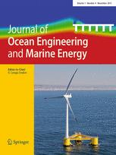
Journal of Ocean Engineering and Marine Energy
Pioneering Interdisciplinary Approaches in Ocean EnergyJournal of Ocean Engineering and Marine Energy, published by SpringerNature, stands at the forefront of interdisciplinary research within the fields of ocean engineering and marine energy. Since its inception in 2015, this journal has aimed to address critical challenges and innovations in energy systems, particularly those harnessed from marine environments, thereby contributing to sustainable development and efficient resource management. With an esteemed Q2 ranking in multiple categories such as Energy Engineering and Power Technology, and Ocean Engineering, the journal serves as a vital platform for researchers, professionals, and students seeking to disseminate and engage with cutting-edge research and technological advancements. Boasting a robust readership and a commitment to open-access principles, the journal fosters a collaborative environment for the exploration of new ideas and approaches in a rapidly evolving sector. By bridging the gap between academia and industry, Journal of Ocean Engineering and Marine Energy remains instrumental in shaping the future of renewable energy solutions and environmental sustainability.